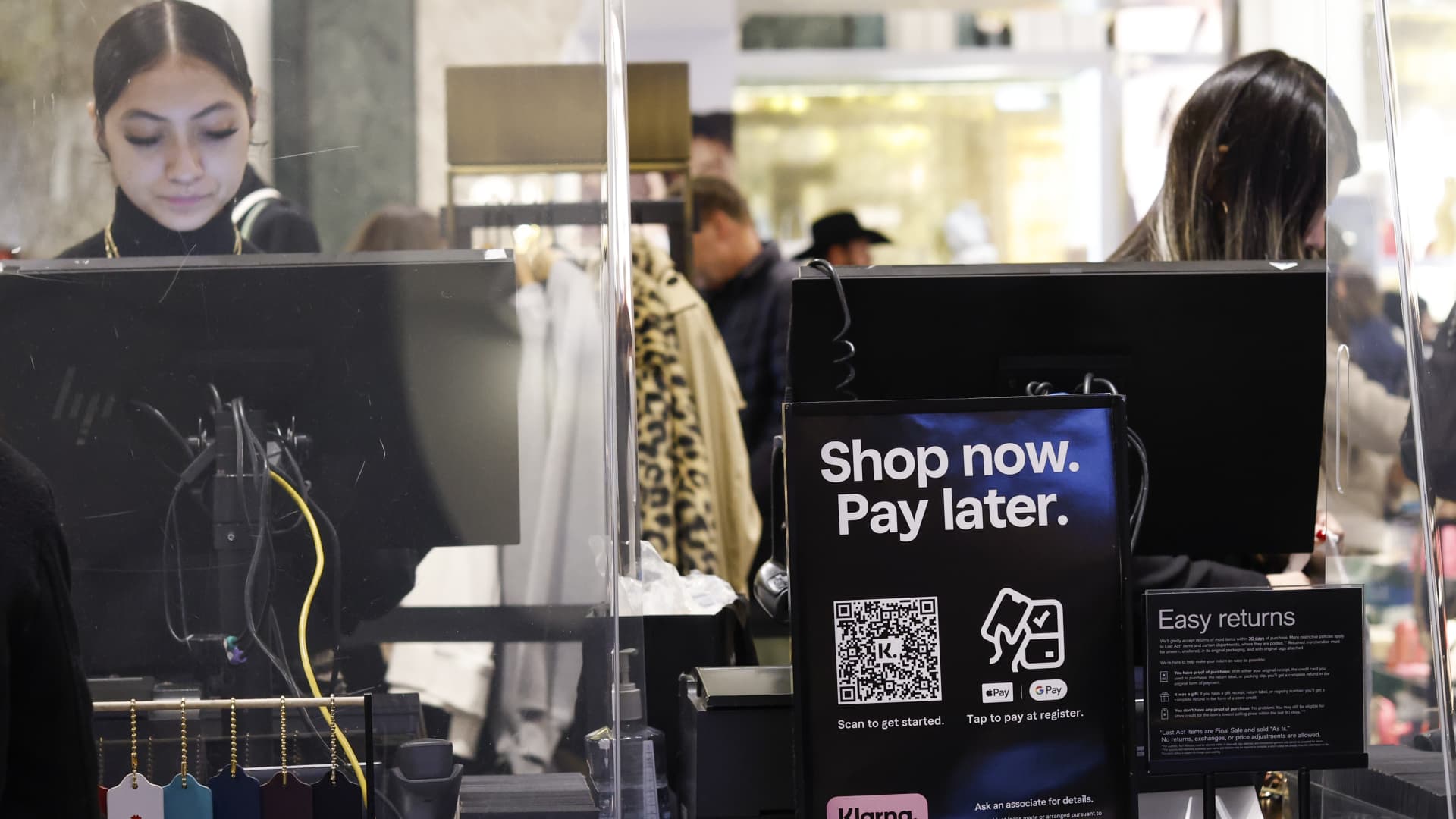Products You May Like
Buy now, pay later options are seemingly everywhere lately. But there’s one place they’re notable absent: your credit report.
Up until now, installment payments have largely gone undetected, primarily because most lenders don’t report their customers’ loan information and payment history to the three major credit bureaus: Equifax, Experian and TransUnion.
That has made buy now, pay later debt especially hard to track, and raised concerns that consumers are getting in over their heads, some experts say — even more than with credit cards, which are simpler to account for, despite sky-high interest rates.
Earlier this year, Apple became the first major BNPL provider to start reporting all user account information to a credit reporting agency. Providers including AfterPay, Affirm and Klarna already report some loans to the credit bureaus and experts say more are likely to follow, paving the way for a consumer’s BNPL history to factor into their credit history and ultimately their credit score.
“Apple beginning to report to Experian is the tipping point,” said Liz Pagel, senior vice president of consumer lending at TransUnion.
BNPL has been operating in ‘stealth mode’
Buy now, pay later, which typically splits a purchase into a few interest-free payments, is one of the fastest-growing categories in consumer finance, according to a report by Wells Fargo. (Walmart’s majority-owned fintech startup One is also now making a big push into installment loans.)
From January through April of this year, BNPL drove $25.9 billion in online spending, Adobe Analytics’ latest shopping data found. That’s a 12% year-over-year increase on the heels of a record-breaking holiday season.
And yet, “BNPL does this in de facto stealth mode,” Tim Quinlan, senior economist at Wells Fargo, recently told CNBC.
“Because no central repository exists for monitoring it, growth of this ‘phantom debt’ could imply total household debt levels are actually higher than traditional measures,” he said.
How BNPL data can be used in credit scoring
Once BNPL lenders provide data to the credit bureaus, it can then also be fed to companies like FICO and VantageScore, which can use it to calculate credit scores. (One of the main aspects of a credit score comes down to your history of paying bills on time.)
“We are actively in the process of obtaining and analyzing BNPL data to determine the potential impact that this data could have on the FICO Score, including whether any changes resulting from the inclusion of BNPL data truly reflects a difference in consumer credit risk,” said Ethan Dornhelm, FICO’s vice president of scores and predictive analytics.
How BNPL credit reporting could help consumers
Incorporating pay-later loans into the reporting system would be especially helpful because it could give other lenders a better understanding of a consumer’s credit risk, based on their history of repaying the loans on time, according to TransUnion’s Pagel.
For shoppers, the ability to demonstrate a track record of paying these loans as agreed “will enable potentially millions of consumers a chance to improve their credit score and get access to additional credit products including credit cards, auto loans and eventually even a mortgage,” said VantageScore’s president and CEO, Silvio Tavares.
More from Personal Finance:
Americans can’t stop ‘spaving’ — how to avoid this financial trap
Don’t believe these money misconceptions
Americans are ‘doom spending’
Generally speaking, the higher your credit score, the better off you are when it comes to getting a loan. You’re more likely to be approved, and if you’re approved, you may qualify for a lower interest rate.
“That is incredibly beneficial,” Tavares said.
Credit reporting of BNPL activity could be especially helpful for those on the edge of establishing credit or who are currently “credit invisible,” experts say — perhaps even more than other payment reporting programs that allow users to build credit based on rent-paying habits, banking activity, and payments for streaming services, electric bills and cellphone plans.
“This could be the biggest financial inclusion opportunity of a generation,” Pagel said. “These are data points on consumers that need more data points.”
When BNPL credit reporting could sting
Not everyone is going to get a boost from all of this information sharing.
BNPL users skew younger and on the lower end of the income spectrum, according to Bank of America Institute’s recent study on buy now, pay later.
Overall, nearly half of households that used this payment method in March earned less than $50,000 a year, the report found. Alternatively, households earning more than $125,000 are tapping BNPL less and less.
“They may have higher discretionary income and they might not be as attracted to the value proposition,” said Joe Wadford, an economist at Bank of America Institute and co-author of the report.
Installment buying encourages consumers to spend more than they can afford, according to a Federal Reserve Bank of Kansas City study. Nearly 20% of buy now, pay later users have also fallen behind on a payment, another report from Bankrate found — a misstep that, if reported to the credit bureaus, could potentially ding their credit score.
Further, because most buy now, pay later plans are short-term loans, they could lower the average age of your credit history — another important factor that could hurt your score.
